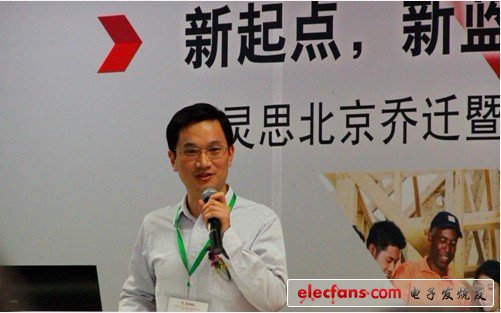Digital video Zhang Gang: Video stream push and distribution based on FPGA system is the strength of FPGA and the future of video
Founded in 2000, Digital Video is a company listed on the GEM. The ocean present here mainly provides program production, and digital video mainly provides program transmission and media services. In view of the triple play, digital transformation and new media services that Digital Video is currently engaged in, FPGA has always been a very important chip in our industry. As just mentioned by General Manager of the Cocom Group, FPGAs have surpassed all of our chips since last year, accounting for 20% -30% of the company's purchases, and are far ahead of other chips.

Zhang Gang, Vice President of Beijing Digital Video Technology Co., Ltd.
I entered digital video in 2000. At that time, FPGA was just beginning to be applied in this industry, and the proportion in the system was still very small. It can be said that before 2000, it was basically the world of some general-purpose ICs.
Since 2000, there have been some FPGAs with hundreds of gates or less than 1,000 gates. At that time, the radio and television industry was mainly stand-alone 1U devices, such as encoders, decoders, and multiplexers, which basically used 3-4 small-scale FPGAs for each single board. Since 2006, FPGAs have undergone major changes, mainly due to a significant reduction in cost and a significant increase in performance. In our field, several important things began to appear in 2006. The first is software radio. The software radio industry refers to the modulation based on Cable transmission or the modulation based on DVB-T and DVB-S transmission in the radio and television industry. Until today's development, including the modulation of our Chinese national standard, etc., all modulation algorithms are ultimately implemented by FPGA. I think this is by far the largest branch of FPGA procurement in this industry. The second more important change is that after the FPGA performance is improved, we now have high-speed connections in many industries, such as ASI interface, SDI interface, including today's 3G-SDI interface can be implemented with FPGA. This actually greatly reduces the cost of the entire device. For example, ASI deserialization can be achieved with a dedicated chip of more than three hundred dollars in the past. Now only a dozens of dollars of FPGA can be used to speed up this high speed. The interface is processed. The third change is from 2006. Because of the emergence of competitive oligarchs, the development from stand-alone devices to platform-based devices has expanded. Therefore, the scale of FPGA usage has expanded from the initial thousands of gates to tens of thousands or even hundreds of thousands of gates. Used to implement some platformized equipment. So from the beginning of 2006, the use of FPGA in this industry has entered a vigorous development stage. It is precisely because of the emergence of such platform equipment that digital video has opened the gap with competitors, and the proportion of FPGAs in the company's procurement has also steadily increased. I expect that in the next three to five years, or even longer, the platform processing chip will be the focus of our industry, and it is also a direction that I think FPGA should work hard.
Probably since last year, the concept of cloud services has appeared in the industry. For cloud services, I think the field of broadcast television is actually the field of centralized services. But this cloud service is mentioned because with the integration of our three networks, especially with the development of the mobile Internet, customers' application and demand for video have increased significantly, which also requires that the video processing capability at our headend must be greatly improved. In the past, a large number of architecture servers may be used in the field of video services. These servers are unacceptable to customers in terms of energy consumption and cost. Especially in the field of program services, as the next step we need to strengthen the functions of transcoding at the head end, video search, video applications, advertising placement, or search of our programs, etc., which I think are actually digital. The current direction of videoconferencing in the research field. And it is based on the embedded system, especially the push and distribution of the video stream based on the FPGA system. These are the strengths of FPGA, and also the future development of video, or one direction we should pay attention to when the cloud era comes.
In recent years, the cooperation between digital video and Xilinx is gradually deepening, especially since last year, we have a very important product in the field of software radio, and it is also a product with relatively large shipments. Some very deep cooperation. This is very important for the performance improvement and cost reduction of our products.
Db 44 Connector,Computers D-Sub Data Bus Connector,Industrial Equipment Data Connections Connector,Right Angle 44Pin D-Sub Connector
Dongguan City Yuanyue Electronics Co.Ltd , https://www.yyeconn.com